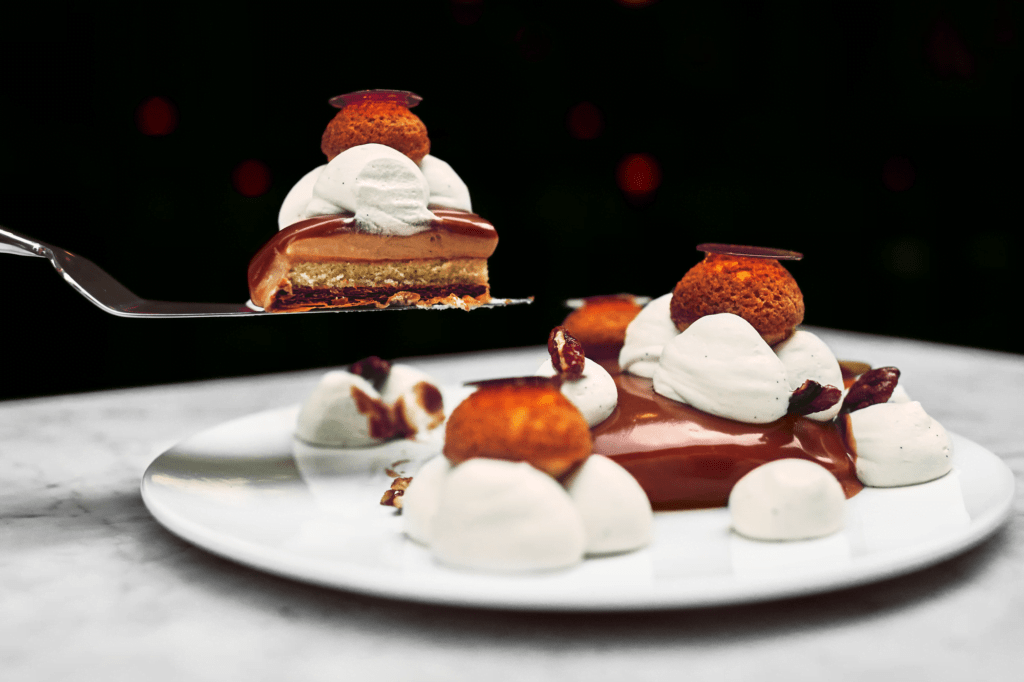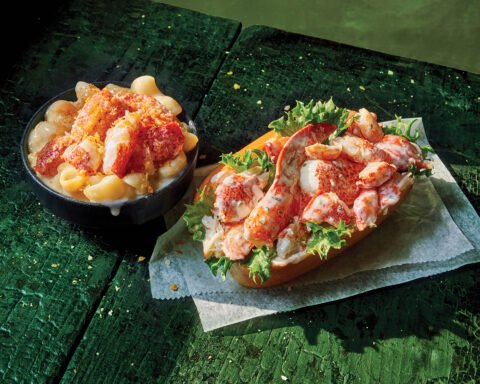foodandwine.com/ – From a stand serving up life-altering tacos in Los Angeles to a New York diner reimagined through an Asian-American lens, these are the best new restaurants in America
I spent the first half of the month of February on my final leg of nearly five months of travel and research for this year’s Best New Restaurants list. As I bopped in and out of restaurants in the Pacific Northwest, my biggest concerns were avoiding traffic and making my reservations on time. COVID-19 was just a blip on the radar, a scary virus that was oceans away. Little could I imagine that just a few weeks later, life as we knew it would come to a screeching halt, and restaurants as we knew them would cease to exist; those bustling dining rooms I was so eager to visit would soon turn eerily—and, in some cases, permanently—silent.
To be perfectly frank, my Food & Wine colleagues and I have spent the months since I wrapped my research debating the merits of list-making as a pandemic rages on throughout the world and people take to the streets to push back against police brutality and systemic racism. Restaurants—whether they are fine dining or casual, big or small—are fighting tooth and nail to survive. Do we really need a list of the country’s best new restaurants, or chefs, right now at this moment in our country’s history?
I say yes. A pandemic doesn’t cancel the work that these remarkable chefs and restaurant owners have done over the past year. Maybe these sorts of declarations are cliché at this point, but it was truly an incredible year for dining in America. Diners were spoiled for options, most at incredibly affordable price points. I still think about the cozy Burmese dinner I ate at Washington, D.C.’s Thamee—a parade of hits, including a deeply satisfying, slightly tannic tea leaf salad. I still dream of the showstopping tom yum soup, overflowing with aromatics and giant prawns, that I scarfed down at Kalaya in Philadelphia. I would pay a very large sum of money to once again spend an afternoon tearing through a plate of duck confit tacos at Nixta Taqueria in Austin.
It was deeply important to me, in my first year as a restaurant editor, to expand the definition of what gets to count as a “best new restaurant.” The idea that a restaurant had to be a place with four walls, a front door, and daily hours felt limiting. It also didn’t feel equitable. Not everyone can afford to open a brick-and-mortar spot. Not everyone wants to. But to ignore the creativity and sheer flavor that comes out of food stands, pop-ups, and trucks felt like a giant missed opportunity. As long as a concept was regularly accessible by diners, it was fair game.
Food & Wine is partnering with Southern Smoke Foundation to help raise money for restaurant workers around the country who are in crisis. Please consider making a donation today.
That decision paid off in droves, surfacing gems like El Ruso, a taco truck in Los Angeles that serves flour tortillas so tender they will make you weep and offers the kind of hospitality that is so rooted in generosity, you can’t teach it. It also brought me to food halls, namely one in Chicago, where a stand called Thattu was serving up some of the most exciting, and comforting, Indian food in the country.
The more I thought about it, the more imperative it felt to publish this list this year. The restaurant industry is a notoriously difficult business in the best of circumstances, with many restaurants shuttering just a couple years after opening. So for these 10 restaurants to open their doors and face an industry-shifting pandemic head-on in their first year of business is an uphill battle to say the least. In a restaurant’s first year, the team is just finding their rhythm. They are just starting to develop regulars, but they don’t have the same loyal customer base a restaurant that has been open for a decade might have. In the first year, many owners are still paying off the debts they incurred to open their restaurant in the first place.
Still, in the midst of everything, these restaurants quickly pivoted, finding different ways to support and feed their communities. For example, chef Sam Yoo and his team quickly changed the menu of Asian-influenced diner hits at Golden Diner to be not only delivery friendly but also extremely affordable, creating specials that are just $7. Mason Hereford, the chef and owner of Molly’s Rise and Shine in New Orleans, decided to stop cooking his menu of gonzo breakfast items and turn his efforts to lobbying for the restaurant industry instead. And chef Lincoln Carson—the chef responsible for some of the best pastries I’ve ever had—tried to save his restaurant Bon Temps by serving family-style takeout meals but eventually had to make the decision to permanently call it quits.
So this year, with this Best New Restaurants list, we honor their hard work, their dedication to their communities, and the reality that they may not all survive.
Automatic Seafood and Oysters (Birmingham, Alabama)

CREDIT: WES FRAZER
Game-changing seafood restaurant focused on sustainability.
Why We Love It: Adam Evans has a deft hand with all things oceanic—he spent years at the helm of The Optimist, one of Atlanta’s most beloved and award-winning seafood restaurants. Now back in Alabama, his home state, Evans is using those skills to celebrate the seafood of the Gulf of Mexico, with an emphasis on championing less-celebrated species and off-cuts. Try the fish collar, an off-cut that is typically discarded but which Evans, like a fish fairy godfather, transforms into the belle of the ball: It arrives at the table crispy on the outside, tender and flaky on the inside, and smothered in a lush Calabrian chile butter. It’s best followed by an order of the swordfish, which Evans poaches in duck fat until you can slice it with a butter knife, and a plate of the meaty oysters swimming in pools of preserved lemon–herb butter. There are no wrong turns on the menu, but one thing is for sure: If it’s from the sea, you want it cooked by Adam Evans.
The Pivot: “You have to take it day by day,” says Evans of the switch to takeout. “But it’s comforting to know that everyone is going through it and figuring it out, just like we are.” For the new to-go menu, Evans focuses on dishes that customers might not make at home or find elsewhere, like pan-fried snapper with a warm frisee-and-bacon salad. To celebrate Automatic Seafood & Oysters’ one-year anniversary, which took place a few weeks after the state-mandated shutdown of restaurant dining rooms, Automatic offered Champagne in to-go bags. It was such a hit with customers, they’ve kept it on the menu.
Bon Temps (Los Angeles)
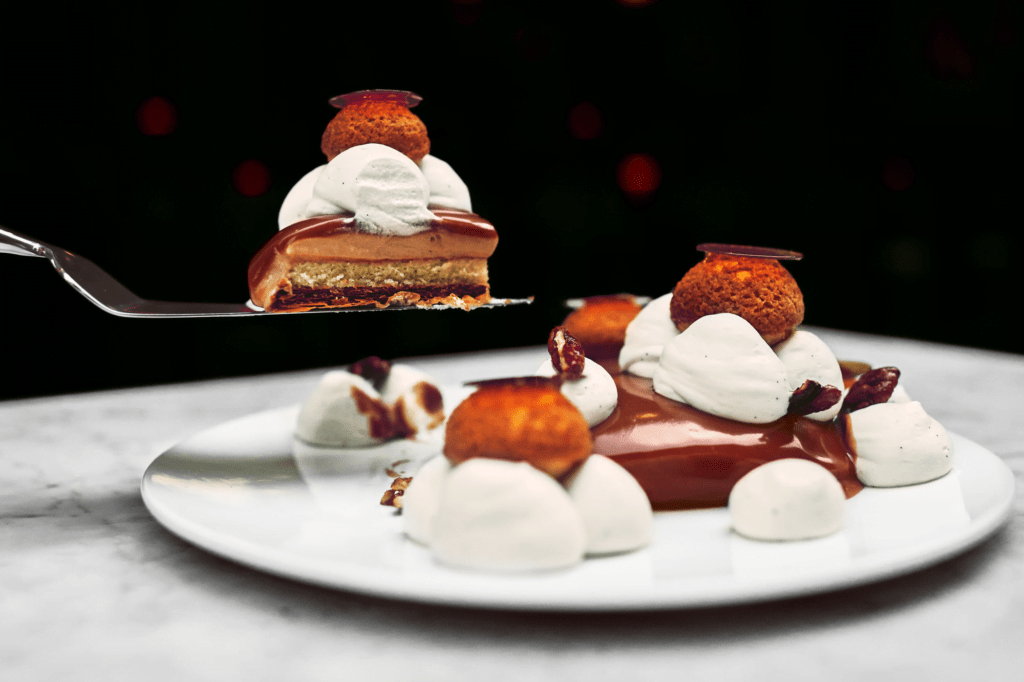
CREDIT: SIERRA PRESCOTT / DIANA HOSSFELD
Perfect pastries and imaginative Cali-brasserie cooking in the warehouse-filled Arts District.
Why We Loved Them: Chef Lincoln Carson waited until he turned 50 to open his first solo restaurant, and diners benefit from his patience. You could taste the skills of an almost-30-year career as a pastry chef in each buttery fold of a croissant, and in the height of a perfectly wobbly chocolate soufflé, and in each layer of Carson’s show-stopping Saint-Honoré. But he is also equally skilled with savory ingredients. You only needed to look at finesse of his crab cake, a structural balancing act where a silky patty of Dungeness meat and scallop mousse was topped with an impossibly thin disc of pain de mie, a layer of fanned ripe avocado slices, and a refreshing tangle of crisp greens. No matter what you ordered, as the restaurant’s name indicated, you were in for a good time.
Their Pivot: When the pandemic first hit, Carson decided to shut down the restaurant, but by the end of the week, he realized he needed something to do. So he started baking again, selling pastries to his neighbors in the Arts District. “It was a point of normalcy for a minute, and I took it as a sign,” he says. Carson started cooking family-style meals Wednesday through Sunday and baked goods on the weekends. He was making 12 different types of pastries, including three types of croissants. At first, the pastries seemed profitable, with the restaurant making double the revenue on baked goods than they were before, but overall, the restaurant was making in a week about what it would make in one night when it was fully open. Carson’s goal was to make enough to survive and “stay relevant,” he says. And while there was enough money coming in to keep a handful of people on payroll, he ultimately decided that keeping Bon Temps open was not financially viable. The restaurant permanently closed in April. It’s a devastating reminder that many of our favorite restaurants may not survive the pandemic. But we waited a long time for Carson to open his first restaurant. We will wait, and hope, for as long as it takes for him to open his next one.
El Ruso (Los Angeles)

CREDIT: AUBRIE PICK
Taco stand serving up life-altering tortillas and meats via Sonora and Baja California.
Why We Love Them: You haven’t had a true flour tortilla until you’ve had one of Julia Silva’s. Under a tent, in an industrial corner of Los Angeles’ Boyle Heights neighborhood, Silva expertly stretches dough on to an electric comal and makes tortillas so supple, they’ll ruin any other version for you. Every once in a while, she stops to stretch a sobaquera—an almost wafer-thin tortilla the size of a children’s blanket and a specialty of El Ruso. To her side is taquero Walter Soto, who cooks up the handful of things worthy of Silva’s tortillas: tender carne asada, an addictive birria de res made from beef stewed in Tecate beer, creamy pinto beans. Perhaps the only thing more impressive than the tacos is Soto and Silva’s hospitality. It’s not uncommon for Soto to grill up a little pile of meat for a hungry dog sniffing its owner’s order with jealousy, or for Silva to wrap a stack of tortillas in foil to-go for a regular’s wife—no matter how long the lines get.
Their Pivot: El Ruso was just hitting its stride when the pandemic shut down Los Angeles: Soto was whipping up tacos six days a week for a steady crowd that included a few Hollywood celebrities, and they’d recently finished a new seating area across from the grill and comal. El Ruso may not be able to extend the same hospitality to customers as it did before, but Soto and Silva are still serving up tacos and tortillas. For safety reasons, they no longer have their popular salsa bar, so Soto has taken instead to giving individual bottles of salsa to regulars. Even though the stand is open a fraction of the time it was before (these days it’s Friday to Sunday and for takeout only), it remains as popular as ever. Hungry customers flood Soto’s phone with preorders, and people drive from all over Los Angeles to stand in lines—six feet apart—that are often nearly an hour long. Soto says he sells out pretty much every day, and he feels optimistic about the future of the restaurant. When he’s not at the grill, he’s working on a new taco truck that will transport El Ruso’s transcendent tacos to more parts of the city.
Gado Gado (Portland, Oregon)
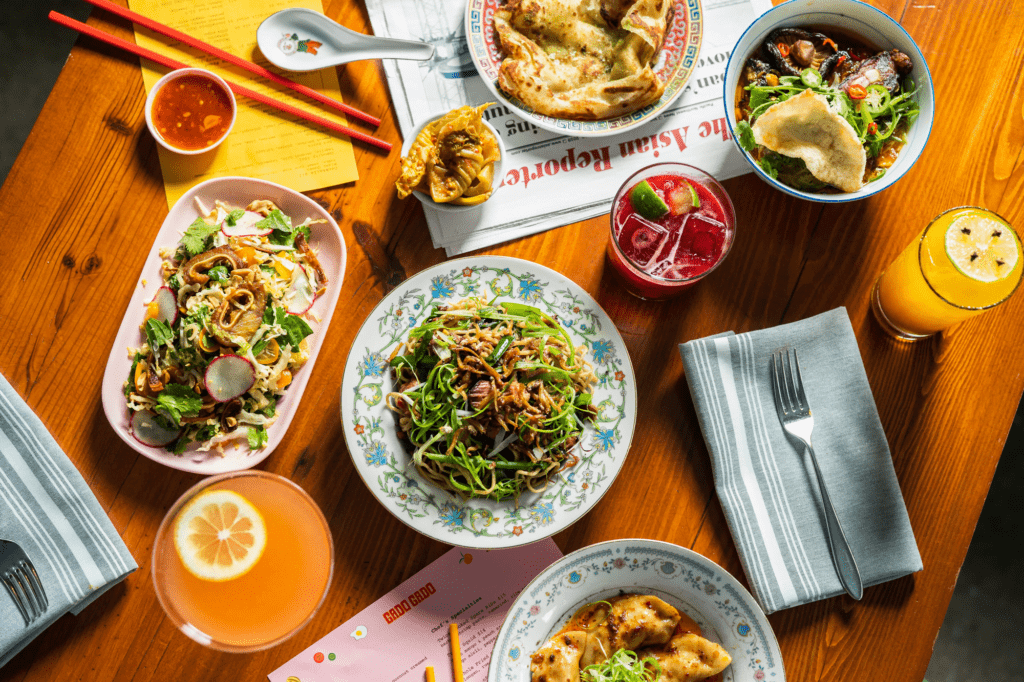
CREDIT: CHRISTINE DONG
Playful Indonesian food with gigantic flavors in the Pacific Northwest.
Why We Love Them: Gado Gado loosely translates to “mix mix,” which perhaps best explains the energetic menu at chef Thomas Pisha-Duffly’s first brick-and-mortar venture. Here he combines the food of his oma, his Indonesian grandmother, with his American upbringing. The result is pure kitchen magic: deeply savory pork and blood sausage corn dogs served with a side of hoisin-spiked mayo he dubs “hoisinaise”; addictive clams cooked down with Coca-Cola, lemongrass, basil, and pickled chiles for punch. And yes, his take on the namesake gado gado salad is also very good. Pisha-Duffly tosses a mix of sweet potato, green beans, tempeh, and hard-boiled egg in with a spicy peanut sauce that makes it extra fun to each your vegetables. It’s the kind of cooking that’ll make you wonder why Indonesian food isn’t available on every street corner of America.
Their Pivot: “The whole world changed, and it happened so quickly that it took us a minute to figure out what to do. Having to lay off my staff was the worst day of my life. I just wanted to curl into a ball and be with my wife and daughter. But I couldn’t afford to do that, or I would have no restaurant to come back to. We (my wife, Mariah, and I) quickly realized it made no sense to serve our regular menu for takeout. We originally started as a pop-up, so we decided to return to our roots. We put Gado Gado on pause and launched Oma’s Takeaway, with a different menu every night. The food is totally different—it’s essentially stoner food. We even open at 4:20 p.m. Right now, we are cooking whatever we want. We make things like homemade dan dan noodles with a blood sausage ragù, burgers with chile-onion jam and buns griddled in coconut-herb butter, and a mazemen ramen Alfredo. It’s not a viable business yet, but we are making enough to keep the lights on.” —Thomas Pisha-Duffly
Golden Diner (New York City)

CREDIT: TEDDY WOLFF
Classic diner hits reimagined through an Asian-American lens.
Why We Love Them: Chef and Queens native Sam Yoo has figured out what the classic diner has long been missing: a fully stocked Asian larder. At the stylish-yet-retro restaurant where Tiffany-style lamps hang above the tables and lace curtains cover the windows, the egg-and-cheese sandwich is packed with silky scrambled eggs and rests on a fluffy sesame-scallion milk bun—an homage to Chinatown just a few feet away from the restaurant. Crispy calamari arrives with a side of marinara spiked with nam jim, a spicy Thai dipping sauce. The timeless club sandwich is upgraded with perfectly fried chicken katsu cutlets à la Japan, and Yoo’s satisfying cheeseburger is slathered with an umami-heavy mushroom-gochujang sauce, a shout-out to his Korean heritage. The flavor combinations feel seamless. Natural, even. This is not fusion, but what a modern American restaurant should feel like in 2020.
Their Pivot: Yoo and his team spend their days cooking up what they are calling “happy meals” for the neighborhood. “It’s not food we’d typically serve at the restaurant, but it’s food that brings people comfort, for cheap.” The popular daily special, which costs just $7, is enough to last for two meals. Initially, Yoo used ingredients donated from restaurants that decided to fully close, but now he is working with his purveyors to keep his prices low so that he doesn’t have to charge more.
Three Happy Meals
Dan Dan Noodles: “This was our first happy meal, and it was our biggest hit. We even made a vegetarian version with oyster mushrooms instead of beef.”
Chicken and Rice: “Chicken and rice is beloved in NYC, but we did it with an Asian twist. We grilled the chicken and served it with garlic rice and a side of tingly cumin-chile oil.”
Penne All’Amatriciana: “Being a diner, we obviously have a lot of bacon in house. And who doesn’t like pasta?”
Molly’s Rise and Shine (New Orleans)

CREDIT: DENNY CULBERT / EVYN BLOCK
The breakfast and lunch spot you wish was open for dinner.
Why We Love Them: Mason Hereford made a name for himself cooking up larger-than-life sandwiches at Turkey and the Wolf, and for his sophomore effort, he turns his attention to breakfast—though often it’s breakfast for the sleep-in-on-the-weekdays-type set. The burrito, as comforting as a good hug, arrives filled with scallion cream cheese and bursting with sweet potato waffle fries for extra crunch. The bagel bite tray, inspired by the freezer aisle snack, arrives as a DIY situation with an umami-rich slow-cooked tomato cream cheese, salty shaved pepperoni, and plenty of fresh basil leaves. Perhaps the best display of Hereford’s talent is the roasted carrot yogurt, a shockingly vegetal offering made with swirls of bright carrot marmalade, crunchy fistfuls of granola, and fresh mint. It’s pleasantly grown-up food served in a restaurant where the salt and pepper shakers are attached to toy cars and board games line the walls.
Their Pivot
Food & Wine: What did you do when the crisis first hit?
Mason Hereford: I got together with my staff, and we decided we should switch to a takeout model. We did that for two days, and then we decided to shut down the restaurants. We didn’t want to risk anyone’s health or safety.
You now call yourself a “hobby lobbyist.” How did you get involved in politics?
I realized it’s kind of messed up to leave it on business owners to figure out the protocol to safely serve food during an epidemic. We did a huge charity event for Planned Parenthood last year, and it was the first time I felt like I could cause change. I try to get involved where I can.
What do your days look like now?
I wake up at 8:30 every day so I can participate in Independent Restaurant Coalition’s daily calls. They are really leading the charge. In the afternoon, I hop on a call with the other group, Hospitality United Alliances, which is led by a group of regional representatives, like chef Jason Hammel from Lula Cafe in Chicago. I am also writing my first-ever op-ed.
What are you focused on?
We are trying to make sure that small restaurants aren’t left behind. The PPP (Paycheck Protection Program) has been ineffective, so the next big fight is to ask for a stabilization fund for restaurants specifically.
What have you learned?
I have learned about how Washington works. I’ve learned that having a lobbyist is the way to be more effective than not. I’ve learned how resilient the people in this industry are.
Kalaya (Philadelphia)

CREDIT: IAN LORING SHIVER
Homestyle Thai cooking with larger-than-life flavors.
Why We Love Them: Half the reason to visit Kalaya, in Philadelphia’s Queen Village neighborhood, is owner Chutatip “Nok” Suntaranon’s passionate Thai cooking, and half is to meet Nok herself. The preeminent hostess, Nok, a former flight attendant, has as much personality as her food has flavor—which is to say, boundless. There is no pad thai or ambiguous red curry to be found here. Nok instead prepares dishes pulled from memories of cooking Southern Thai food with her mother. There are irresistibly chewy tapioca dumplings dyed indigo with butterfly pea flowers and stuffed with mushrooms and peanuts. A silky chicken curry, known as kang gai khao mun, melds garlic, shallots, lemongrass, and lots of white peppercorn with coconut milk and shrimp paste. Even Nok’s take on tom yum soup, which arrives teeming with fresh giant shrimp, barramundi, and mushrooms, is full of seasoning and flare. Kalaya’s cooking is theatrical and bold, and Philadelphia is better for it.
Their Pivot
Food & Wine: What did you do when the crisis first hit?
Chutatip Suntaranon: I changed my business immediately to a takeout model, but we also started to feed people in the industry who had lost their jobs; we called it “family meals.” But we quickly realized that more people were hungry, so we started feeding everyone who needed food.
Why did you decide to stay open?
I want to keep my staff employed and feed my community. It’s important that everyone around me is able to access good food.
What kind of food are you cooking for family meals?
At first, we were cooking the food from the walk-ins of restaurants that had fully shut down, and we also had a lot of donations from our community. We make things like chicken and rice, pork belly, mac and cheese, and lots of pasta. (One of my sous chefs has experience cooking Italian food.)
How many people do you feed?
At first, we were feeding around 75 people per day. Now, we are feeding on average 30 people per day. We give out meals six days a week, and we are now also cooking meals for frontline workers at hospitals.
What are some of the challenges?
Every day is a new struggle. This week my butcher decided to close for two weeks (and it will probably be longer than that), which means I have to find a new butcher and pay double the price or order a bunch of meat and prep it all in advance so I can freeze it. I am doing everything I can to keep my costs down so I can continue to keep my staff paid.
Nixta Taqueria (Austin)

Devastatingly good tacos and tostadas on heirloom corn tortillas.
Why We Love Them: It’s bold to open a taqueria in Austin, a town with no shortage of good restaurants and good tacos. But chef Edgar Rico sets Nixta apart by grinding heirloom corn in-house to create tender tortillas that taste more intensely of corn than the vegetable itself. Rico then tops these tortillas with everything from scoops of jewel-toned roasted beet “tartare” to rich shreds of duck confit. He even pulls from co-owner Sara Mardanbigi’s Persian heritage, topping tacos with “Persian molé,” a sauce that draws inspiration from a beloved Iranian chicken stew. If it’s unconventional, Rico will find a way to turn it into a taco—a philosophy that has helped secure the restaurant’s place as one of the city’s best taco destinations.

CREDIT: MACKENZIE SMITH KELLEY

Their Pivot: The COVID-19 pandemic hit shortly after Nixta Taqueria celebrated five months of being open. “January and February were actually our best months so far,” says Mardanbigi. The coronavirus brought their momentum to a screeching stop. Instead of figuring out how to manage an overflowing dining room, Mardanbigi and Rico had to quickly figure out how to set up an online ordering platform. “Before this, only 5% of our business was takeout,” says Mardanbigi. They kept a skeleton crew on to help fulfill online orders for a pared-down menu of tacos, tostadas, and paletas. And while other people were stockpiling toilet paper, Rico stocked up on heirloom blue corn for the tortillas they make in-house. “I was worried the borders might shut, so I bought 250 pounds of corn.” While the borders didn’t close, Nixta’s molino—the machine used to grind corn into masa for tortillas—broke down, forcing Rico and Mardanbigi to pivot within their pivot. They started selling tortas, which proved so popular that they kept the sandwiches on the menu even after the molino was back up and running again. Though they are surviving for now, Mardanbigi says she feels like they are operating on borrowed time: “It makes planning for the future really hard.”
Thattu (Chicago)

Soul-warming dishes from the Indian coastal state of Kerala.
Why We Love Them: There are very few restaurants that specialize in Keralan cooking, and Thattu is one of the best. Located inside the Politan Row food hall, the team serves up regional favorites like juicy Keralan fried chicken—which arrives at the table boneless, seasoned with curry leave, ginger, and garlic—and a comforting beef curry that deploys a spicy roasted coconut sauce as its base. Thattu is owned by chef Margaret Pak and her husband, Vinod Kalathil. Pak, a career-changer who spent years working in tech, fell in love with the food of her husband’s culture (Pak herself is Korean-American), and after years of hosting pop-ups and learning recipes from her mother-in-law, Pak decided to go all in on the concept last May. She may have come to Indian cuisine later in life, but she makes perfectly pillowy appam—soft crêpes made from fermented rice flour and coconut milk—like a Keralan auntie with 40 years of cooking experience under her belt.
Their Pivot: “March 15 was our last day of business when the mandate came in that we had to shut down. We don’t have the option of doing delivery or takeout because we are located in a food hall and work out of a shared kitchen space. We had built momentum, and we went from an extreme high to an extreme low; it was a giant mental shift. For two weeks after we closed, I was a blob and basically just slept. But then I started doing a lot of yoga, a lot of meditation, and a lot of cooking as self-care. I started to post recipes on our Instagram and website (thattuchicago.com/blog). This way I can share with our customers what I am up to plus show people what they can do at home. I’ve been playing around with more vegetarian options because I have been trying to use up produce boxes from our distributors. Most recently I shared a recipe for carrot thoran, a stir-fried carrot dish. I received lots of requests for our egg curry recipe, so I put that on the site, too. I miss working with my team, but people sharing photos of them making the egg curry has made me so happy.” —Margaret Pak
Thamee (Washington, D.C.)

Vibrant Burmese flavors from an unstoppable mother-daughter duo.
Why We Love Them: Jocelyn Law-Yone is cooking her version of soul food. She left Myanmar (formerly Burma) at 16, but her obsession with the flavors of Burmese cuisine—which often includes Indian and Chinese ingredients—has only deepened. At Thamee, the vibrant, bustling restaurant she opened with her daughter, Simone Jacobson, Law-Yone weaves in and out of the kitchen and around the dining room, joyfully explaining the story behind each dish set in front of diners. Nearly every table orders the pickled tea leaf salad, a Burmese specialty. Law-Yone’s version is assertive, fresh, and bright thanks to hefty amounts of lime juice and delicate tea leaves imported from Myanmar. It’s best followed up with an order of ohno khauk swe, a restorative bowl of chewy lo mein noodles and hard-boiled eggs swimming in a coconut-lentil curry, and Ma Jo’s Spicy Tofu, Law-Yone’s playful riff on the Sichuan classic, mapo tofu. She swaps standard tofu for the Burmese version, made from chickpeas, which is best spooned over an order of the Golden Rice, yellowed with turmeric and laced with fried shallots, each grain loaded with comfort.

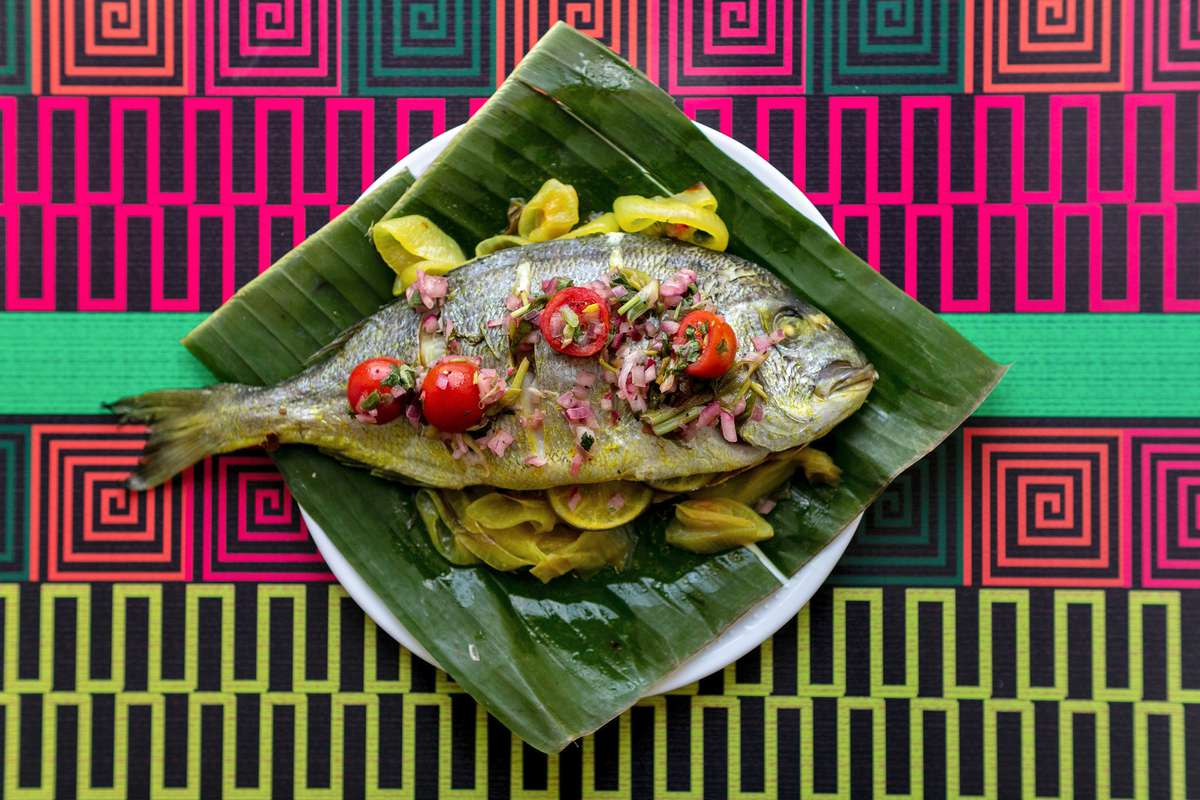
Their Pivot: Law-Yone and Jacobson had spent every day together since opening Thamee, but once they shuttered the restaurant in response to COVID-19, they have not been able to see each other. Here is how they’re spending their days apart.
Jocelyn Law-Yone: “What this has given me is time to breathe. It was just crushingly sad; we were working at an incredible pace, and the rug was just pulled out from under me. I have been using this time to catch up on all the things I have wanted to do for a long time: develop new recipes, make lots of sambals, and dive deeper into my heritage. Every day I wake up and shower and put on make-up like I am going to work. I then take a walk if it is not raining before settling into a day of reading, cooking, and writing. I am finally writing down all the menu ideas that have been in my head and needed to be on paper. I am also working on a collection of historical fiction stories for my granddaughters. I try to wind down my day at 10 p.m. now and read a book or watch a movie before falling asleep.”
Simone Jacobson: “I think I now spend 80% of my days on the phone. I am involved with the D.C. Hospitality Coalition (a local forum and support group for hospitality workers) and start my day with a daily check-in call. I am working the same hours I did while at the restaurant, except my day starts and ends earlier. One of the things I am most excited about is this series of virtual happy hours I’ve organized with Happied, a company started by one of our servers, where our bar ma


